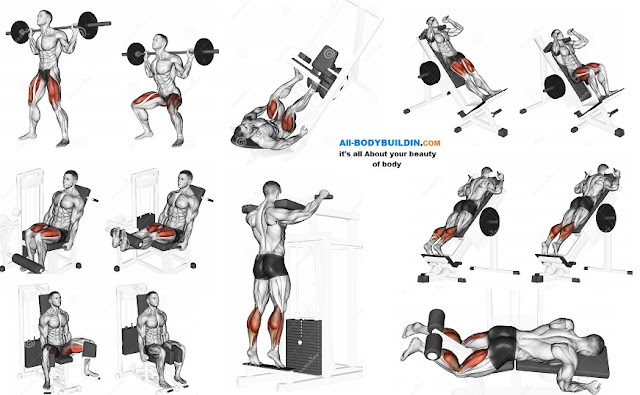There are many "mistakes" one can make that will slow or even halt their progress towards having a fit and ideal body. I am listing, what I feel are the top 6 to avoid.. Now, I don't mean to say that if you make any of these mistakes that you should get all depressed and quit, just correct them as best you can and keep moving forward. It is important to understand that you need to keep moving forward. Nothing is ever achieved overnight and without a few "bumps" in the road. having said all that, here we go:
1. You Should Keep a Workout Journal
With a journal, from day 1, you can measure your progress and any fall backs you might have daily or weekly. You decide how often you want to do it. The journal could possibly have, your daily nutrition intake, calories, types of food, etc. It definitely should have your starting weight and measurements of all parts of your body. Arms, legs, waist, and chest. This may seem like a major pain in the you know what, but trust me, it is needed. People need to see the progress to keep motivation to continue. the also need to know if they "back slid" a bit so they can correct it. Once you get used to doing a journal, it really only takes a minute or 5.
2. Failure To Warm Up Correctly
Warming up properly can consist of light stretching,a few basic exercises like jumping jacks or jogging in place, knee bends, squats, an exercise bike session possibly, etc. It is, again, your choice of what works for you. These will stretch and warm your muscle groups which makes them more acceptable and responsive to your main workout plus is a major factor in reducing or eliminating any injuries which will really set you back.
3. Speaking of Injuries- Not Taking Care Of Injuries
Men have a tendency to have a problem admitting when they have an injury. I am guilty of that myself. We figure "we are men, we don't get hurt"! yeah right. If, even after proper warm ups, you do feel an injury or a "twinge", stop working out immediately. First, that can keep it to a minor injury that will heal quite fast and not slow you down, Secondly it won't make it worse requiring a doctor possibly. It is easy to stop working that particular muscle group for a few days and work others while you heal up which doesn't put your fitness progress on hold.
4. Not Keeping To Proper Nutrition
The main problem here is not putting in enough of the right vitamins and minerals and protein for proper muscle development. you need to adhere, as close as possible, to the nutrition guidelines that are spelled out in other articles I have written. You wouldn't expect your car to run good on water. You need the right fuel. Same thing with your body. Feed it right for maximum results!
5. Increasing The Weight You Lift Too Fast
This will harken back to the injury mistake. Once you have been lifting a while, men want to "macho" it out and increase the weight and reps they do before their body is ready. Slow down cowboy, you want to add weight and reps slowly. The proper amount and time can vary by individual. Adding weight and reps should be done weekly not daily. This will cut your chance of injury and also keep you increasing muscle and burning fat as efficient as you can.
6. Making Your Exercise Sessions To Lengthy
Don't workout until you collapse just about. Most sessions, including warm up, cool down, and the lifting and cardio, should be around an hour or a little more or less. You should be properly tired out after that time and not exhausted. Exhaustion tells you that you are hitting it a bit too hard. Over working isn't going to win you any medals or gain you any more in fitness. It may set you back from breaking down muscle too much. After a while in your routines, you will get a "feel" for what is enough.
There are the 6 mistakes to avoid, in my opinion. there are 2 more that are very important also. I will reveal those at another time.
Thanks For Reading,



































